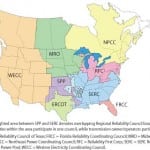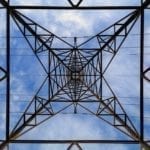The impact of environmental initiatives and the need for transmission infrastructure are among the most important issues facing electric reliability in North America over the coming 10 years, the quasi-public agency North American Electric Reliability Corp. (NERC) said last week in its 2008 Long-Term Reliability Assessment (PDF).
Though the total miles of transmission additions have increased slightly over the 2007 report, generation additions are projected to significantly outpace new transmission development.
“We need more transmission resources to maintain reliability and achieve environmental goals,” said Rick Sergel, president and CEO of NERC. “Transmission lines are the critical link between new generation and customers, yet we continue to see transmission development lag behind generation additions. Faster siting, permitting, and construction of transmission resources will be vital to keeping the lights on in the coming years.”
The report also highlights other key reliability developments, including those that follow.
Capacity margins generally improved; Desert Southwest and Western Canada require more resources by 2010 — Lowered load forecasts for the coming 10 years and new market mechanisms have contributed to generally improved capacity margins for most of North America. More resources will be required to meet target capacity margins in the Desert Southwest and Western Canada over the next two years, however.
750% growth in proposed wind generation projected by 2017 — As state and provincial environmental regulations begin to come into effect, certain regions of North America, such as Texas, the Midwest, the Mid-Atlantic, and the Western states and provinces, are projecting large additions of wind capacity over the next 10 years. Though only approximately 23,000 MW of the total 145,000 MW is projected to be available on peak, these proposed additions, if developed, would help to diversify the fuel mix in those areas and provide needed new energy resources. While progress has been made on methods to integrate these new resources into the electric grid, more work and transmission resources will be necessary to ensure reliability is maintained as these resources come on-line.
Demand response projected to offset nearly 80% of U.S. peak demand growth in 2016; significant growth in energy efficiency projected — Nearly 34,000 MW of demand response and 11,000 MW of energy efficiency are projected to be in place across North America by 2016, reducing total demand by 3.3%. Several regions, including Florida and the Midwest, are reporting peak demand reductions of more than 6%. These resources are providing critical reliability services, increasing the operational flexibility of the grid, and complementing the addition of new variable generation resources such as wind and solar energy.
Protection system misoperations identified as a leading cause of bulk power system outages in North America — Protection system performance has caused or exacerbated a growing percentage of bulk power system outages over the past several years, contributing to over 40% of these outages in 2007. This developing trend has made this issue a primary reliability concern for the coming years. NERC has begun to expand current efforts to address this issue through its standards and technical analyses.
Source: NERC









